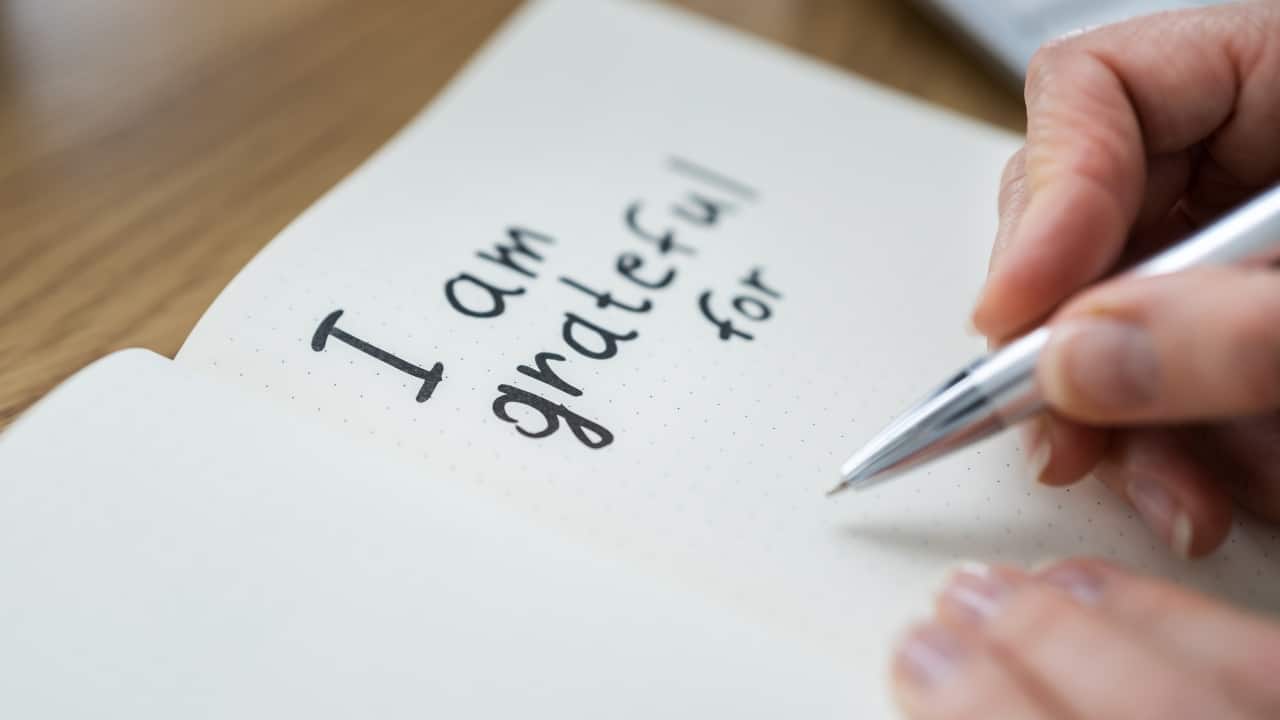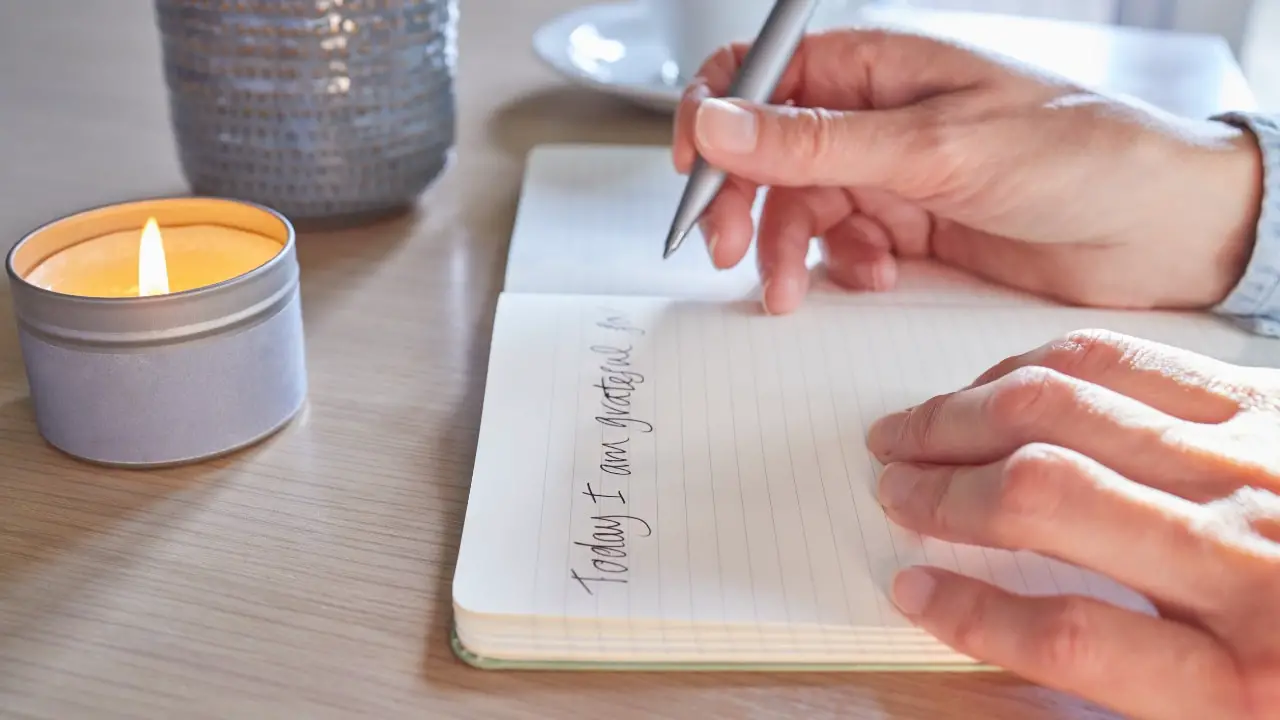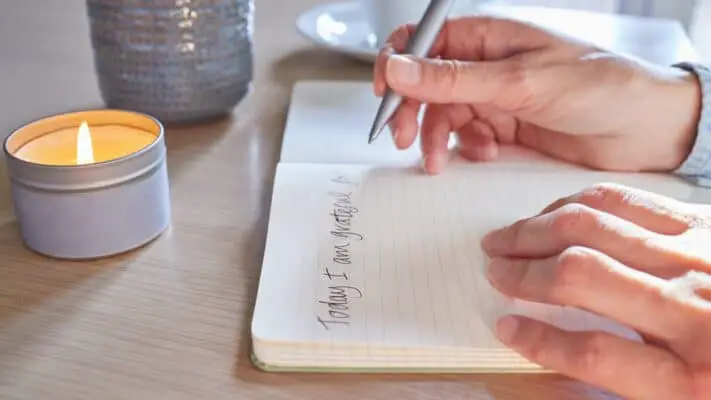
Have you ever stopped for a moment and pondered on the things in life you’re truly thankful for? A warm home, supportive friends, a loving family, or maybe just the delightful aroma of your morning coffee. These moments, big or small, shape our lives and paint our days with joy and contentment. And this is where the power of gratitude journaling unfolds.
Gratitude journaling is a transformative practice, as simple as it is profound, that revolves around the act of regularly documenting things you are thankful for. It’s a gentle and nurturing exercise that encourages us to slow down, take a step back from our busy lives, and truly acknowledge the good that surrounds us.
But why is gratitude so essential, you might wonder? Gratitude, in its simplest form, fosters a mindset of positivity and well-being. It’s a beacon in the tumultuous sea of our minds, guiding us towards a healthier, happier, and more fulfilling life. The beautiful thing about gratitude is that it doesn’t require monumental events or exceptional circumstances. It’s about finding joy in the ordinary and contentment in the mundane.
In this article, our purpose is to peel back the layers of gratitude journaling. We’ll explore what it is, why it’s so beneficial, and most importantly, how you can incorporate it into your life. By the end of this article, I hope you’ll be inspired to pick up a pen, find a notebook, and begin your journey into the rewarding practice of gratitude journaling.
Fasten your seatbelts, we’re about to explore the transforming power of gratitude journaling.
- The Power of Gratitude
- What is Gratitude Journaling?
- Science Behind Gratitude Journaling
- Getting Started with Gratitude Journaling
- Tips for Successful Gratitude Journaling
- Deepening Your Gratitude Journal Practice
- Personal Stories and Experiences
- Final Thoughts: Embrace the Journey of Gratitude Journaling
- Resources and Further Reading: Deepen Your Understanding and Practice
- Frequently Asked Questions (FAQs) About Gratitude Journaling
The Power of Gratitude
Do you remember the last time you felt a wave of gratitude washing over you? It might have been a heartfelt “thank you” to a friend who lent a listening ear during a tough time or a feeling of profound appreciation as you witnessed a beautiful sunset after a long day. In those moments, you were practicing gratitude. But what exactly is this seemingly simple emotion, and why is it so potent?
Unpacking Gratitude
At its core, gratitude is an emotion expressing appreciation for what one has. It’s about acknowledging the good in our lives and recognizing that this goodness often comes from outside of ourselves, from other people, or even higher powers, if that aligns with your beliefs.
In essence, when we practice gratitude, we’re shining a spotlight on the positive aspects of our lives. We’re choosing to focus not on what’s missing or what could be better, but instead, on what already is and how wonderful that is.
Gratitude: A Psychological and Sociological Powerhouse
Gratitude’s true power comes from the profound impact it can have on our psychological and sociological well-being. Psychologically, gratitude has been linked with a multitude of benefits. Studies suggest that gratitude can boost our mood and increase life satisfaction, reduce stress, and even improve sleep quality. It’s like a magic potion for our mental health, creating an upward spiral of positivity in our minds.
From a sociological perspective, gratitude is no less powerful. It enhances empathy, reduces aggression, and improves the quality of our relationships. When we express gratitude to others, it not only strengthens our connections with them but also fosters a sense of belonging and community.
Gratitude in Action: Real-Life Examples
Imagine waking up in the morning and instead of groaning at the alarm clock and dreading the day ahead, you start by listing three things you’re grateful for. It could be the comforting warmth of your bed, the sun shining outside, or the fact that you have a job to go to. This simple act shifts your perspective from what’s annoying or stressful to what’s good and enriching in your life. Over time, this practice fundamentally changes the way you experience your days.
Or consider the impact of expressing gratitude to the people around you. Let’s say you thank a coworker for their help on a project. This act does more than just acknowledge their effort—it strengthens your connection with them, improves the team’s morale, and contributes to a more positive work environment.
I’ve been practicing gratitude for years now, and it has truly transformed my life. From the way I interact with others to how I view challenges and setbacks, gratitude has imbued my life with a sense of positivity and contentment I previously thought was unattainable. And I believe it can do the same for you.
What is Gratitude Journaling?
Gratitude journaling – it’s a term you might have heard buzzing around in wellness circles. But what does it really mean? How does it differ from regular journaling, and how did it come to be? It’s time to dive into these questions and demystify gratitude journaling.
Defining Gratitude Journaling
Gratitude journaling, simply put, is the practice of regularly writing down things for which you’re grateful. It’s about actively seeking out and acknowledging the positive aspects of your life, however big or small they might be.
This might look like writing down three good things that happened during your day before bed, or penning a thank you letter to someone who’s made a difference in your life. There’s no one “right” way to keep a gratitude journal – it’s a highly personal practice that can take different forms based on what resonates with you.
Origins and Evolution of Gratitude Journaling
The concept of gratitude journaling isn’t new. In fact, it’s rooted in age-old practices from various cultures and religions around the world that value giving thanks. However, it has gained particular prominence over the last few decades, thanks in part to research in the field of positive psychology.
In the late 1990s and early 2000s, psychologists Dr. Robert A. Emmons and Dr. Michael E. McCullough conducted groundbreaking studies that highlighted the powerful impact of gratitude on our well-being. Their research provided scientific backing to the anecdotal evidence about the benefits of gratitude, propelling practices like gratitude journaling into mainstream consciousness.
Gratitude Journaling vs. Regular Journaling
You might be wondering, How is gratitude journaling different from regular journaling? While both practices involve expressing your thoughts and feelings in writing, the focus differs.
Regular journaling often involves writing about your day or exploring your thoughts and feelings about various aspects of your life. It’s a broad practice that can encompass everything from recording daily events to delving into your deepest emotions and experiences.
On the other hand, gratitude journaling has a specific focus: appreciation. The goal is to identify and express gratitude for the positives in your life. It’s about training your mind to look for the good, cultivating an attitude of gratitude, and intentionally focusing on the positives, no matter how your day was or how you’re feeling.
I’ve found that incorporating gratitude journaling into my daily routine has shifted my perspective, helping me appreciate my life more, even during challenging times. And who knows? It might just do the same for you.

Science Behind Gratitude Journaling
The benefits of gratitude journaling extend beyond anecdotal experiences and personal testimonies. There’s a robust body of scientific research that backs up the power of gratitude, and in this section, we’re going to delve into what these studies reveal.
Key Studies and Research on Gratitude Journaling
Many psychologists and researchers have studied the impact of gratitude journaling on well-being, and their findings have been quite compelling.
The study referenced earlier in this article, conducted by psychologists Dr. Robert A. Emmons and Dr. Michael E. McCullough. In their seminal study, they divided participants into three groups and asked one group to write about things they were grateful for, another group to write about daily irritations, and the last group about neutral life events.
After ten weeks, those who wrote about gratitude were more optimistic, felt better about their lives, and even reported fewer visits to doctors than those who focused on sources of aggravation.
In another study exploring gratitude’s effect on sleep, scientists found a strong link between high levels of gratitude and good sleep quality. Participants with greater gratitude showed better overall sleep quality, shorter time to fall asleep, longer sleep duration, and less daytime dysfunction. This study suggests that these effects are likely due to fewer negative and more positive thoughts before sleep among grateful individuals.
Psychological and Physiological Benefits of Gratitude Journaling
So, what are the benefits of gratitude journaling? Psychologically, practicing gratitude can increase happiness levels, reduce feelings of depression and anxiety, and improve overall mental health.
Physiologically, gratitude journaling can lower blood pressure, improve immune function, and facilitate more efficient sleep.
The Impact of Gratitude Journaling on the Brain
But how does writing down things you’re grateful for translate to these health benefits? It all comes down to how gratitude journaling affects your brain. Gratitude can stimulate the hypothalamus (a part of the brain that regulates stress) and the ventromedial prefrontal cortex (a region shown to support decision-making and critical thinking).
Gratitude also triggers the brain’s reward system, releasing feel-good neurotransmitters like dopamine and serotonin. Essentially, expressing gratitude regularly can help rewire your brain to focus more on positive experiences and emotions.
And that’s just the tip of the iceberg when it comes to the science of gratitude journaling. There’s still much to learn, but one thing is clear: the simple act of noting down what we’re grateful for can have a profound impact on our well-being.
Getting Started with Gratitude Journaling
Starting a gratitude journal can feel a little daunting, especially if you’re new to journaling in general. But I assure you, it’s simpler than you might think. It’s not about writing perfect, eloquent prose—it’s about capturing genuine moments of thankfulness in your day-to-day life. Let’s take a look at some steps to help you begin.
How to Start a Gratitude Journal
First things first, decide on the purpose of your gratitude journal. Is it to feel happier? To reduce stress? To shift your perspective on life? Your goal will guide your entries and make your journaling practice more intentional.
Next, commit to a regular schedule. While you don’t have to write in your journal every single day, consistency is key. Choose a schedule that’s manageable for you, whether that’s daily, every other day, or weekly.
Suggested Frequency and Timing of Entries
Experts suggest that writing in your gratitude journal once or twice a week can be beneficial. Writing more frequently than that might feel like a chore or even lead to burnout.
As for timing, many people find that writing just before bed is helpful. It allows you to reflect on the day and wind down with positive thoughts. But if you’re a morning person, kickstart your day with a dose of gratitude!
Choosing Your Journaling Medium
The medium you choose for your gratitude journal should match your lifestyle and preferences. Some people prefer a traditional, physical journal—it’s a tangible reminder to be grateful, and there’s something special about putting pen to paper.
However, if you’re a digital native or if you’re always on the go, a digital journal or an app might be more suitable. There are many apps available that provide prompts, reminders, and even the ability to add photos to your entries.
Examples of Initial Entries
If you’re unsure what to write, here are a few simple gratitude journal prompts to get you started:
- I’m grateful for the delicious breakfast I had this morning. It made me feel loved and nourished.
- I’m thankful for the warm sunlight that flooded my workspace today. It brightened my mood and kept me energized.
- I appreciate the laughter I shared with a friend today. It reminded me of the joy in my life.
There’s no right or wrong when it comes to gratitude journaling. The important thing is to connect with the feeling of gratitude, however small or large the reason might be.

Tips for Successful Gratitude Journaling
Just like any new habit, maintaining a gratitude journal can come with its own set of challenges. From struggling with consistency to facing a lack of time, it’s natural to encounter hurdles along the way. But don’t worry, I’ve got you covered! Here are some practical tips to enhance your gratitude journaling experience and make it a daily habit.
Overcoming Common Challenges
One of the most common obstacles with gratitude journaling (and journaling in general) is keeping up with it consistently. It’s easy to start off strong, but life can sometimes get in the way. Here’s how to navigate some common challenges:
- Consistency: Try to tie your journaling to a specific part of your routine—like right after dinner, or just before bed. This “anchoring” can make it easier to remember and keep up with your journaling practice.
- Lack of Time: If you’re pressed for time, remember that your entries don’t have to be long. Even jotting down one or two things you’re grateful for each day can have a positive impact.
- Writer’s Block: If you’re having trouble thinking of things to be grateful for, try varying your focus. Consider people, places, objects, experiences, or even challenges you’ve overcome.
Practical Tips to Enhance the Gratitude Journaling Experience
Here are some tips to make your gratitude journaling practice more engaging and enjoyable:
- Be Specific: The more specific you are, the more meaningful your gratitude practice will be. Instead of writing “I’m grateful for my friends,” try something like “I’m grateful for my friend Sarah, who always knows how to make me laugh.”
- Savor Surprises: Unexpected positive events often elicit a stronger sense of gratitude. So, when something surprising and pleasant happens, make a point to journal about it!
- Keep it Fresh: Try not to write about the same things every day. Variety can keep your practice from feeling stale and help you find gratitude in more aspects of your life.
Making Gratitude Journaling a Daily Habit
To make gratitude journaling a daily habit, you might need to experiment a bit to find what works for you. Here are a few suggestions:
- Set a Reminder: Use your phone or digital calendar to set a regular reminder. The act of writing in your journal should become a positive ritual in your day.
- Make it Enjoyable: Create a conducive atmosphere for your journaling. This could be a comfortable spot in your home, a favorite beverage, or a soothing playlist in the background.
- Be Patient with Yourself: Building a new habit takes time. If you miss a day or two, don’t beat yourself up. Just pick up where you left off.
Gratitude journaling can be an incredibly rewarding and enriching habit. With these tips, I hope you’ll find your own rhythm to your gratitude journaling practice.

Deepening Your Gratitude Journal Practice
Once you’ve established a regular gratitude journaling habit, you might be wondering, “What’s next?” Well, the journey doesn’t end there! There’s always room to deepen your practice and enrich your experience. In this section, I’ll share tips on how to write more meaningful entries, incorporate mindfulness, and use various techniques to explore gratitude from new perspectives.
Writing More Meaningful Entries
Adding depth to your entries can transform your gratitude journal from a simple list of positive things into a profound exploration of your experiences and emotions. Here’s how:
- Go Beyond the Surface: Instead of merely noting that you’re grateful for something or someone, dive deeper. Explain why you’re grateful and how it impacts your life.
- Embrace the Negative: Sometimes, it’s in our challenges where we find the most profound gratitude. Don’t shy away from noting difficult experiences and the lessons or strengths they’ve brought you.
- Connect to the Bigger Picture: Try to relate your gratitude to your larger life goals or values. This can foster a deeper sense of purpose and fulfillment.
Incorporating Mindfulness into Your Journaling Routine
Mindfulness and gratitude go hand in hand. By being fully present, you can uncover aspects of your life to be grateful for that you may have otherwise overlooked. Here’s how to weave mindfulness into your practice:
- Pause and Observe: Before you write, take a few moments to sit quietly and tune into your senses. What do you see, hear, feel, smell, or taste that you’re grateful for?
- Be in the Moment: As you write, focus on the act of writing. Enjoy the sensation of the pen on paper or the rhythm of your typing.
- Reflect on Your Day: At the end of the day, mentally walk through your experiences. What moments stood out for their positivity or lessons learned?
Using Prompts and Different Techniques to Explore Gratitude
Prompts can be an excellent tool for expanding your perspective and keeping your gratitude journaling fresh. Different techniques can also help you uncover new layers of gratitude. Here are some ideas:
- Gratitude Prompts: Use prompts to guide your entries. Prompts can range from simple (“What made you smile today?”) to more introspective (“What challenge are you grateful for and why?”).
- Gratitude Letter: Write a letter to someone expressing your gratitude. You can choose to send it or simply keep it in your journal.
- Gratitude Meditation: Start your journaling session with a short gratitude meditation. This can set a positive tone and bring to mind things you’re grateful for.
More: 88 Gratitude Journal Prompts to Foster Positivity in Your Life >>
Remember, there’s no ‘one size fits all’ in gratitude journaling. It’s your personal journey, and these tips are here to inspire you to explore new paths in your gratitude practice. Keep experimenting, and you’ll continue to uncover fresh layers of gratitude in your life.

Personal Stories and Experiences
I firmly believe that stories are powerful. They can inspire us, teach us, and connect us. In this section, I want to share real-life accounts from individuals who have experienced the transformative impact of gratitude journaling. Each story is a testament to the power of gratitude and the profound changes it can bring.
Sarah’s Story: Finding Gratitude Amidst Challenges
Sarah, a single mom of two, started gratitude journaling during a particularly rough period in her life. She was facing financial difficulties and felt overwhelmed by the challenges of raising her children alone. It was during this time that a friend introduced her to gratitude journaling.
At first, Sarah found it difficult to identify things she was grateful for. But as she persisted, she realized that amidst the chaos, there were still moments of joy and beauty. She found gratitude in her children’s laughter, the support from her friends, and even the roof over their heads.
Sarah shared with me that her gratitude journal has not only helped her appreciate the good in her life but also gave her strength during tough times. She said, “In my journal, I found hope. I realized that even on the worst days, there was always something to be thankful for.”
David’s Story: Cultivating Positivity Through Gratitude Journaling
David, a retired teacher, struggled with negative thoughts and feelings after his retirement. He felt lost and directionless, leading to bouts of sadness and anxiety. It was then that he decided to give gratitude journaling a try.
He began to write in his journal every morning, focusing on the positive aspects of his life. He wrote about his love for gardening, his appreciation for his supportive family, and his gratitude for the leisure time he now had.
Over time, David noticed a shift in his mindset. He shared, “Gratitude journaling became a form of morning meditation for me. It helped me start my day with positivity and gave me a sense of purpose. It’s like looking at the world through a new lens – a lens of gratitude.”
Olivia’s Story: Gratitude Journaling for Improved Relationships
Olivia, a young professional, used gratitude journaling to improve her relationships. She realized she often focused on the flaws of her loved ones, causing unnecessary friction. Hoping to change her perspective, she decided to keep a gratitude journal dedicated to her relationships.
Every night, Olivia would write about the things she appreciated about her loved ones. Whether it was her boyfriend’s cooking skills, her sister’s infectious laughter, or her coworker’s helping hand on a project, she took the time to acknowledge and appreciate them in her journal.
Olivia found that this practice changed her attitude towards her relationships. She said, “Gratitude journaling has helped me focus on the positive traits of my loved ones, enhancing my relationships with them. It has taught me to value and appreciate them more.”
Each of these stories serves as a testament to the transformative power of gratitude journaling. They show that regardless of your circumstances, there’s always room for gratitude and that cultivating it can indeed change your life for the better.
Final Thoughts: Embrace the Journey of Gratitude Journaling
As we reach the end of this in-depth exploration, I hope you’re leaving with a deeper understanding of the profound practice that is gratitude journaling. The impact of cultivating gratitude in our daily lives is undeniably powerful. It enhances our mental well-being, fosters positivity, strengthens our relationships, and most importantly, it shifts our perspective to acknowledge and appreciate the abundance around us.
The science-backed benefits of gratitude journaling we’ve discussed are not just abstract theories; they have been experienced by countless individuals worldwide, like Sarah, David, and Olivia. Their stories illustrate how this simple daily practice can transform our lives in ways we could never imagine.
But remember, the beauty of gratitude journaling lies in the journey. It’s not about creating perfect entries or filling pages upon pages with profound insights. It’s about taking a few moments out of our day to pause, reflect, and appreciate.
As we all navigate through the complexities of life, carrying our unique joys and struggles, it’s easy to overlook the good that surrounds us. But through gratitude journaling, we can recenter our focus, seeing our world through a lens of appreciation and abundance.
So, are you ready to embark on your gratitude journaling journey? I encourage you to start today. You don’t need anything fancy, just a notebook, a pen, and a willing heart. Open up to the possibility of transformation, cultivate gratitude, and witness how it enriches your life.
Remember, in the words of Oprah Winfrey:
“Be thankful for what you have; you’ll end up having more. If you concentrate on what you don’t have, you will never, ever have enough.”
Here’s to your journey of gratitude. I can’t wait to hear about your transformative experiences.
Resources and Further Reading: Deepen Your Understanding and Practice
I understand that diving into the world of gratitude journaling might feel overwhelming initially. And while the key is to make it as personal and unique as your journey, having some resources at hand can significantly enhance your practice. Therefore, I’ve put together a list of some of my favorite resources that have helped me along the way. I hope they’ll offer you as much wisdom and guidance as they did to me.
📚 Books
- “The Magic” by Rhonda Byrne: An entire book dedicated to the practice of gratitude, presenting a day-by-day guide on how to incorporate gratitude into every aspect of life.
- “The Gratitude Diaries” by Janice Kaplan: An inspiring year-long journey of the author practicing gratitude, which provides fantastic insights and practical ways to practice gratitude daily.
- “Thanks!: How Practicing Gratitude Can Make You Happier” by Robert Emmons: This book offers a scientific approach to understanding gratitude and its impact on our well-being.
🎙️ Podcasts
- The Gratitude Podcast by Georgian Benta: A series of inspiring interviews with successful people who practice gratitude and the transformative effects it had on their lives.
- Oprah’s SuperSoul Conversations: While not solely about gratitude, this podcast often delves into themes of mindfulness, appreciation, and positivity.
📱 Apps
- Five Minute Journal App: This application makes it easy to practice gratitude daily, prompting you to list things you are grateful for every day.
- Grateful: A Gratitude Journal: This app helps you cultivate gratitude with simple prompts and reminders.
Exploring these resources can offer you varied perspectives and deepen your understanding of gratitude. Remember, the most important thing is to make your gratitude journaling practice uniquely yours. Use these resources as guides, but allow your own experience and feelings to shape your practice.
I’m excited for you to delve deeper into the beautiful practice of gratitude journaling. I hope these resources offer you the wisdom, inspiration, and guidance you seek on this journey.
Frequently Asked Questions (FAQs) About Gratitude Journaling
What is gratitude journaling?
Gratitude journaling is a practice of regularly noting and reflecting on aspects of your life that you appreciate and are thankful for. This can range from significant events to simple everyday occurrences. The practice helps foster a positive mindset and contributes to overall well-being.
Why should I practice gratitude journaling?
Gratitude journaling has numerous psychological and physiological benefits. It can help improve mood, decrease stress, improve sleep, and foster a positive outlook on life. By taking time to focus on what you’re grateful for, you train your mind to notice and appreciate positivity.
How do I start a gratitude journal?
Starting a gratitude journal is simple. Choose a medium you’re comfortable with – a physical journal, a digital document, or an app. Set aside a few minutes each day to reflect and jot down a few things that you’re grateful for. There are no right or wrong answers – it’s about what feels significant to you.
I’m struggling to maintain consistency with my gratitude journal. Any tips?
It’s common to face challenges with maintaining consistency. You might consider setting a specific time each day for journaling, tying the practice to another daily habit, or using prompts to help generate ideas. Remember, it’s more about the quality of your gratitude than the quantity.
How can I deepen my gratitude journaling practice?
To deepen your gratitude journaling practice, consider exploring different aspects of gratitude, using prompts, or incorporating mindfulness. Reflect not only on what you’re grateful for but also why it matters to you. Over time, you’ll begin to notice a shift in your overall perception and attitude towards life.
















